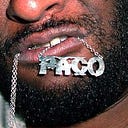Michael Jordan, Oprah, Michael Jackson, Prince, and other black celebs didn't represent a shift toward inclusion in the 1990s.
It represented a kind of racial exceptionalism that fame and wealth could afford people on a pedestal. But it only offers so much insulation from reality.
Let's not overlook the fact that the OJ Simpson case laid America's still quite present racial realities bare.
Of course, I will not deny the fact that there were people across the spectrum in America in the 90s who wanted to believe that racism was becoming a thing of the past.
But it was mainly among folks with more cosmopolitan views, largely informed by integrated life in big cities and *some* small towns, who became blind to the fact that *most* of America–some whole states–were still segregated, meaning mostly white.
I mean, there are still at least 10 states with populations that are 85% - 95% white, including Vermont, West Virginia, North Dakota, and Kentucky.
In 2014, just ten years ago, there was a study that made the rounds in the media that reported how three-quarters of whites in America don't have any non-white friends.
The vigorous embrace of Donald Trump's white nationalist ideology illustrates the prevalence of that segregationist view.
And somehow we still don't want to face it.
